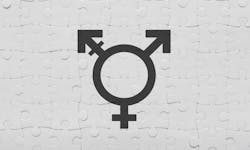Gender identity and the role of the dental hygienist
I’ve been seeing Amy as a patient in our dental clinic for close to six years. She is sweet, kind, respectful, and brings her partner, Emily, with her each time she visits because she does not like to come to the dentist. Often her partner holds her hand and comforts her as I clean her teeth.
I’ve seen Dan for five years. Dan is married to Ashley and they have a four-year-old daughter. They love coming to the dentist and they value their health. They are excellent parents, demonstrate love, and have tremendous respect for each other.
All of these patients are employed, happily living life together, and faithful about seeing me for their routine dental visits. They’re no different from you and me; however, they have all chosen to make a major change in their lives—gender identification or gender transition.
I provided their dental treatment through their transitions, and I watched as they went through hopelessness, struggle, happiness, and everything in between. Their process is not easy. As I worked with them, at times I felt like I didn’t know how to talk with them, direct a conversation, or help them as their dental hygienist.
What I did know was that I wanted to respect their decisions, I wanted to encourage their health, and I wanted to make sure that we were able to create an environment of trust, love, and respect. What I didn’t know was exactly how to accomplish that.
When Amy told me that she/he was transitioning from female to male I simply asked, “I don’t know what gender transition entails. Can you share what that means with me?” He was very open about his transition, and actually cried when I asked him what it meant for him. He said, “My sister has disowned me and won’t let me see my nephew anymore, and the fact that you want more information is huge!”
Amy, who asked that I call him Luke, explained that he had never felt comfortable with who he was. He felt that his whole life was a lie and that he was living a double life. He lived in a state of constant self-hatred and self-denial. When he chose to take this opportunity, it had been five years in the making. He read, investigated, prayed, Googled, and YouTubed anything he could get his hands on about gender identification and gender transition. He finally made the decision, “knowing that not everyone would accept me, but I had to make that very personal choice for me and my happiness.” His process is now six months along, and Luke told me that he is on tremendous doses of testosterone, is moody, and is basically going through puberty. But he also told me that he’s the happiest he’s ever been.
When Dan and Ashley told me that they are a nonbinary couple, I was like a deer in the headlights. What does that mean? Dan was in my chair, so I said, “I want to be respectful and meet you where you are. Can you please explain what nonbinary means?”
Dan explained, “I don’t identify with either male or female. Ever since I was a young boy, I could not grasp who I was. As a nonbinary, I prefer not to have a gender preference. Along those lines, could you please call me ‘D’ instead of Dan? Also, if you could avoid calling me ‘him’ or ‘her,’ that would be great!”
D went on the explain that they’d had their penis and testicles removed. They are now in the process of deciding whether or not they want to start estrogen therapy to make the transition from male to female. Ashley was also there and said, “Yes, I would greatly appreciate it if you would call me Ash, not Ashley.” Ash’s story is very similar in that they did not like who they were as a female. They had been thinking about transitioning for the past 10 years.
As I asked more questions, I realized that name identification is important because it helps people start the process of changing their identity. However, not all gender and nonbinary people choose to change their names. Each person is very individual in their process. For the dental office, it’s important that all of the staff know about any name changes in order to maintain consistency and make the patient feel comfortable. Intake forms and computer input can be changed to someone’s preferred name as this helps continuity of preference and shows respect for the patients.
It’s important not to judge
Judgment, criticism, and misinformation surround this process and journey. Some providers choose to avoid a conversation because of fear of saying the wrong thing. Also, there may be a bias based on upbringing, religious viewpoint, or other backgrounds. If possible, try to lay aside personal feelings and address the patient as if they were your own son or daughter.
Transphobia is a real issue. It is stressful for the people going through transitions. Transphobia is the fear, disbelief, hatred, or mistrust that someone exhibits toward anyone going through a transition. Transphobia can take many forms, including negative attitudes, aversion to transgender people, irrational fear and misunderstanding, discounting preferred pronouns and gender identity, derogatory language and name calling, bullying, abuse, and even violence.1 It can take place in a dental office, and it can be as simple as saying to a coworker, “Did you see that shemale?” Or “What was that person?” We have to be careful to be kind and respectful.
It’s important to ask how we can help
I asked Luke, “How can I best serve you as you transition?” If the patient is open—and I find that most of them are—simply asking for more information in an effort to make them comfortable creates an open dialogue and fosters a safe environment for growth, trust, and acceptance. Luke gave me specific examples on how I could relate and help him as he transitioned.
It’s important to address them in a manner that validates who they are. When D and Ash asked that I not use the pronouns “him” or “her” I thought, this is going to be tough. I challenge you not to say lady, man, girl, boy, him, or her during a conversation. It’s hard. I made the mistake of saying to Ash, like I say to most of my female patients, “OK, lady, our work here is done.” Ash wasn’t upset, but I said, “I’m sorry. Please know that from now on, if I say anything that offends you, I’m not trying to.” Ash was very pleased that I was trying to understand their position. They even laughed, “It’s OK. It happens all the time.” I find that interjecting their names, such as Ash instead of “she” or “her”, eliminates the need for a gender label mishap.
It’s important to walk alongside them during their oral care
I learned one of the first clinical aspects of transitioning is hormone therapy, which led some patients to struggle with gum inflammation and tissue response changes. High doses of testosterone or estrogen therapy is a first line of treatment during a transition. When working with patients, I noticed tender gums, gums that bled easily, and edematous tissues. Talking openly with patients about hormone therapy and possible oral effects is important. Collaborating with medical doctors can help during their process. In Luke’s case, with a history of periodontal disease and its untoward effects, we decided to ask the medical doctor if it would be possible to lower the testosterone dose. As a result, we saw lowered bleeding indices.
It’s important to seek information
When I started navigating gender, gender identification, nonbinary, and binary, I learned there is a lot of information available. We have to remember that gender terms do not always reference sexual preference. Gender and sex are two different things. There are terms and meanings that can help. Some include cisgender, cross-dresser (CD), drag queen, drag king, gender dysphoria, gender fluidity, gender nonconforming, gender nonbinary, genderqueer, intersex, transgender (also trans), transgender man, and transgender woman. Some of the outdated terms that may be perceived as offensive are gender identity disorder, hermaphrodite, pre-op or post-op (transgender does not always mean a surgical intervention), sex change operation (the preferred term is sex reassignment surgery or SRS), shemale, tranny, transsexual, or transgendered.2
It’s important to remember that we will fumble
In our attempts to use the right terms, avoid the wrong terms, validate, support, and collaborate, we will fall. As we navigate gender and gender identification infrastructure, we won’t always get it right. As long as we seek to educate, gain proper information and insight, communicate effectively with our patients, and lay aside our personal feelings, we then can walk harmoniously with our patients who are going through the difficult journey of transitioning.
Related: He is now she: Addressing the health history changes for a transgender dental patient
References
- What’s transphobia? Planned Parenthood website. https://www.plannedparenthood.org/learn/sexual-orientation-gender/trans-and-gender-nonconforming-identities/whats-transphobia.
- Transgender identity terms and labels. Planned Parenthood website. https://www.plannedparenthood.org/learn/sexual-orientation-gender/trans-and-gender-nonconforming-identities/transgender-identity-terms-and-labels.
About the Author

Suzanne Hubbard, RDH
Suzanne Hubbard, RDH, is a direct-access hygienist who owns her own practice in Greeley, Colorado. She serves on dental missions to Guatemala twice a year to an orphanage and a landfill community. She is currently working on two county initiatives to work with colleagues in the clinical understanding of cannabis use and its effects on the periodontium. Hubbard is also working on oral health and the pregnant, single mother, advocating for positive oral health outcomes for baby and mother.

